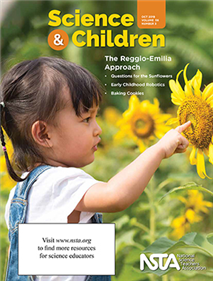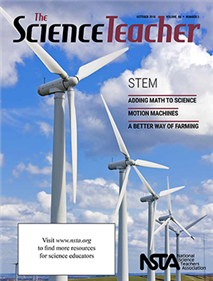All Resources
Journal Article
Using Magnetism to Move a Toy Vehicle
At a kids’ inquiry conference, preschoolers assume the role of scientists....
Journal Article
Using emergent inquiry curriculum to explore physical science and measurement ...
Journal Article
How student questions drove a class journey from outer space, to glow-in-the-dark paint, through computers and electricity....
Journal Article
Cultivating science, imagination, and art through sunflowers...
Journal Article
A Lego robotics club inspired by Reggio Emilia supports children’s authentic learning....
Journal Article
Editor’s Note: Promoting Lifelong Learning
Science and Children’s editor shares thoughts regarding the current issue....
Journal Article
The Early Years: Creating a Possibility-Rich Classroom Environment
This column discusses resources and science topics related to students in grades preK to 2. This issue describes an activity that creates a “possibility-rich” environment or experience for children to have firsthand experience with phenomena or d...
Journal Article
The Poetry of Science: Questions, Questions!
Building literacy in playful, meaningful ways....
Journal Article
Mathematical and computational thinking help science students make sense of real-world phenomena....




